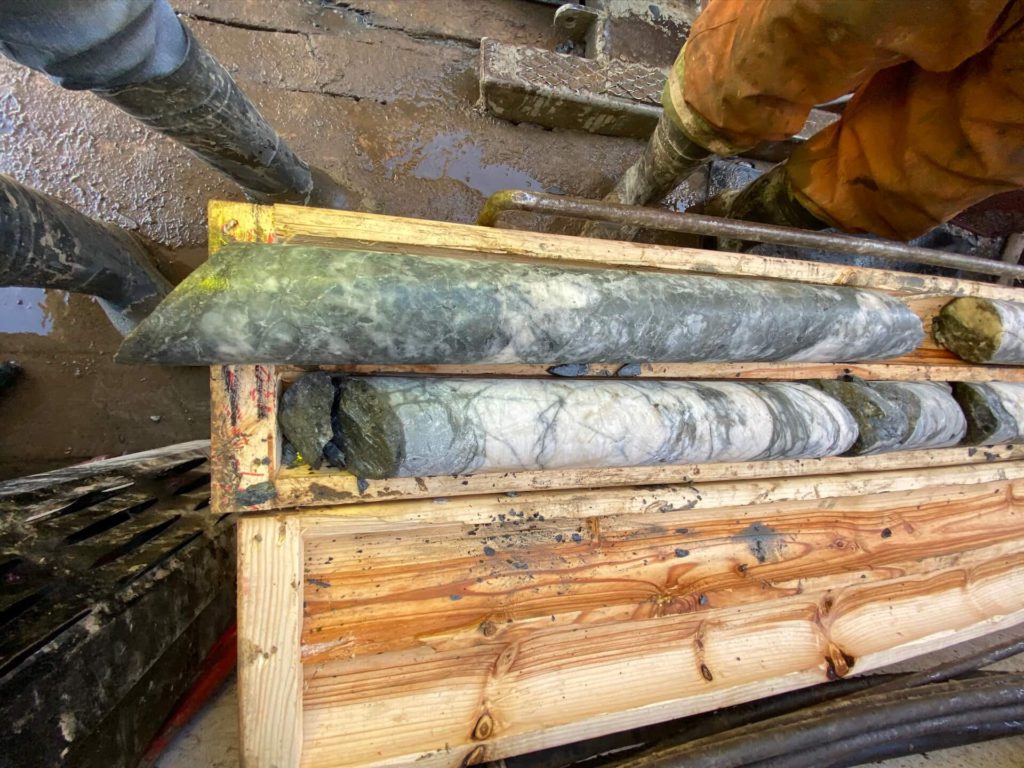
New Found Gold (TSXV: NFG) has released partial assay results for five holes completed within the Keats zone at its Queenway gold project in Newfoundland, 15 km west of Gander. These drill holes targeted both the Keats Baseline fault that makes up principal Keats zone, returning long intervals of high-grade mineralization, as well as the veins in the fault footwall, where it discovered additional gold mineralization.
Drill highlights include 30.1 metres of 27 g/t gold from 107.7 metres; 39.1 metres of 25.8 g/t gold starting at 49.5 metres; and 46 metres of 24 g/t gold from 49.5 metres from the Keats zone. Assays from the footwall include 5 metres of 5.6 g/t gold starting at 175.9 metres; and 2.5 metres of 21.9 g/t gold from 191.5 metres.
According to the release, the 46-metre interval above is the “broadest high-grade drill intercept to date at Keats.”
In the brief, Greg Matheson, the company’s COO, noted that drilling is now stepping out the Keats Baseline fault to the north, south and at depth.
“Drilling to date at Keats has also encountered multiple veins in the footwall of the Keats Baseline fault, typically returning assays in the 0.5 to +3 g/t [gold] range. The high-grade intervals recently encountered in this secondary veining [are] very encouraging.”
Matheson also added that the 2019 discovery hole, which returned 19 metres of 92.9 g/t gold from the Keats Baseline fault, was drilled below mineralized veining and halo mineralization. One of the drillholes in the latest release also intersected 125 metres of material above 0.1 g/t gold, which would suggest a broad halo within the Keats Baseline footwall.
New Found Gold plans to continue testing for additional zones of high-grade gold between the Keats Baseline fault and the Appleton fault to the north.
The company is completing a 200,000-metre drill program at the site. At 1,500 sq. km, Queensway includes over 105 km of strike along the Appleton and JBP fault zones.
(This article first appeared in the Canadian Mining Journal)